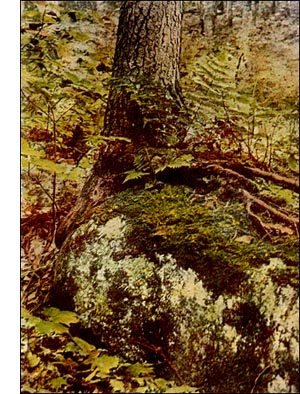Tetraplodon Mnioides Moss
 Tetraplodon mnioides, Bruch & Schimp.
Tetraplodon mnioides, Bruch & Schimp.Habit and habitat.--Growing in dense tufts on decaying animal matter in mountainous regions.
The specific name mnioides is derived from the Greek for; moss, and the suffix; like.
Plant (gametophyte).-Robust, pale-green, 1/2 to 3 inches high, stems branched, covered with matted root-like filaments below.
Leaves. -Crowded, ovate-lance-shaped or narrowly obovatelance-shaped; apex pointed, suddenly narrowed into a flexuous yellow awn; vein prolonged to form the awn; margin yellow, entire.
Habit of flowering.-Male and female flowers on one plant (monoicous).
Veil (calyptra).-Small, conical, usually split up one side.
Spore-case.-Short-cylindrical, fawn-colour, with a cylindrical green apophysis, both become dark-red, and the spore-case is contracted below the mouth when empty.
Pedicel (seta).-Stout, orange to red, variable in length, 1/2 to 2 inches long. Enlarged under the spore-case.
Lid (operculum).-Obtusely conic.
Teeth (peristome).-Reflexed when dry, orange-red.
Spores.-Small, mature in summer.
Distribution. -Universal.